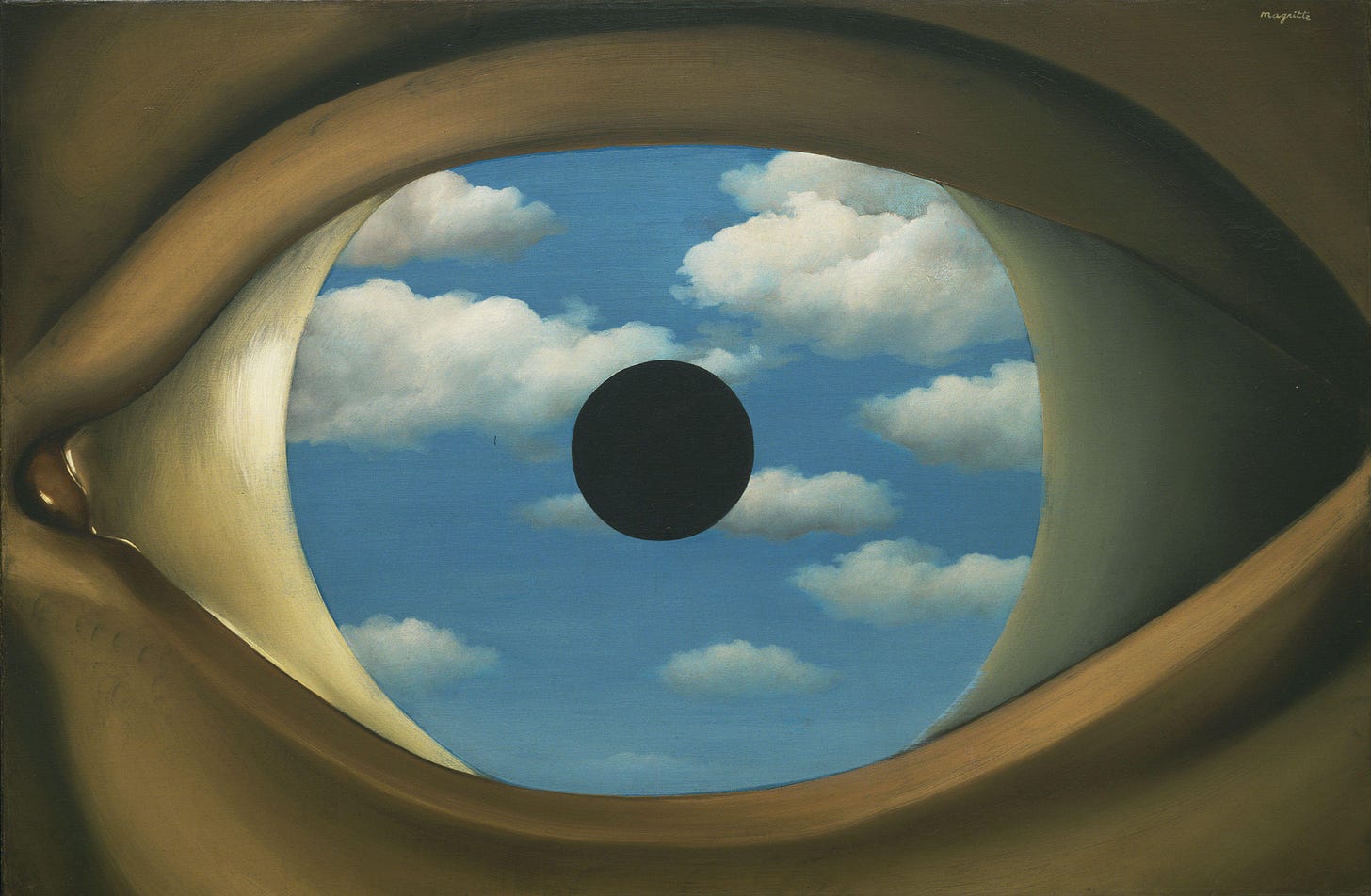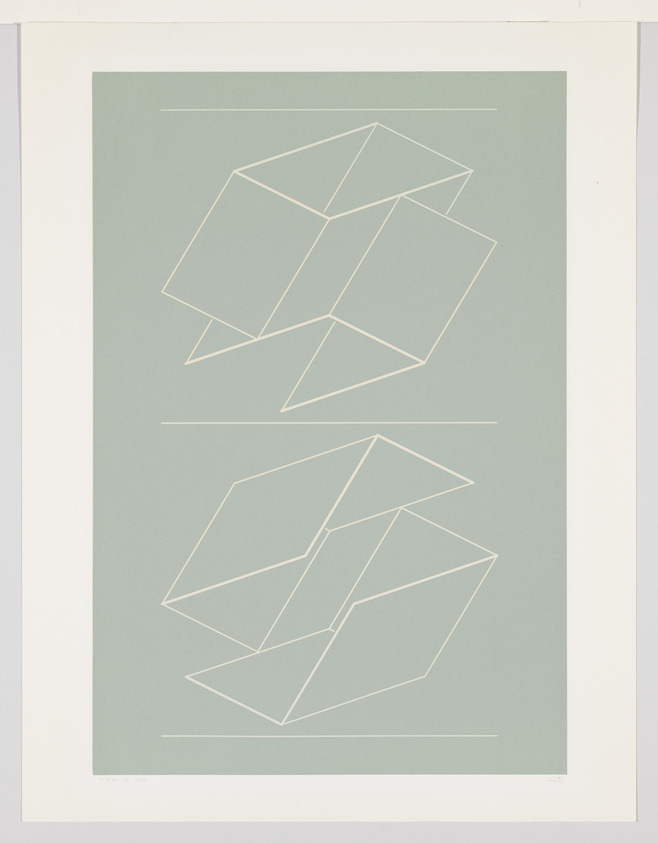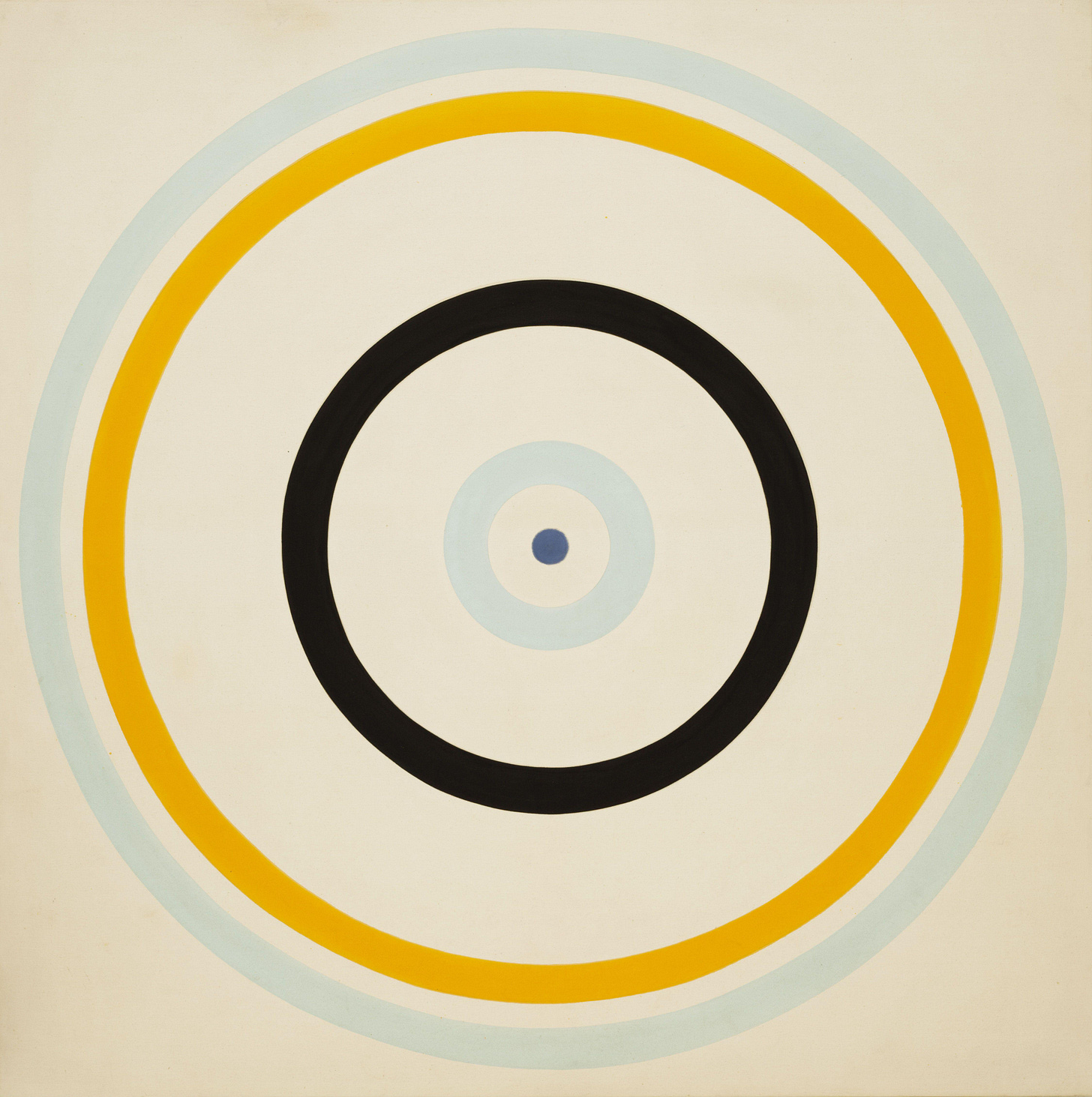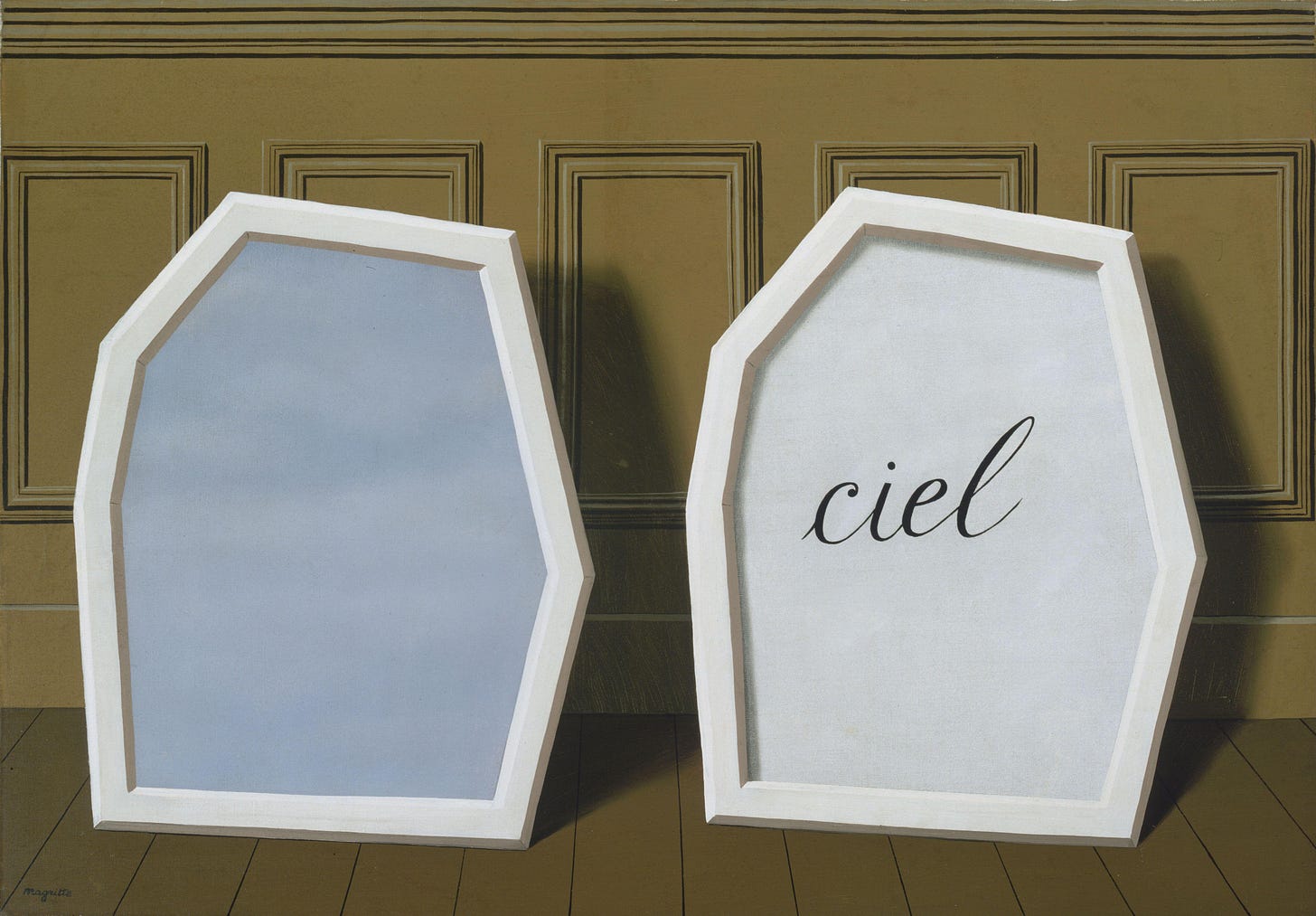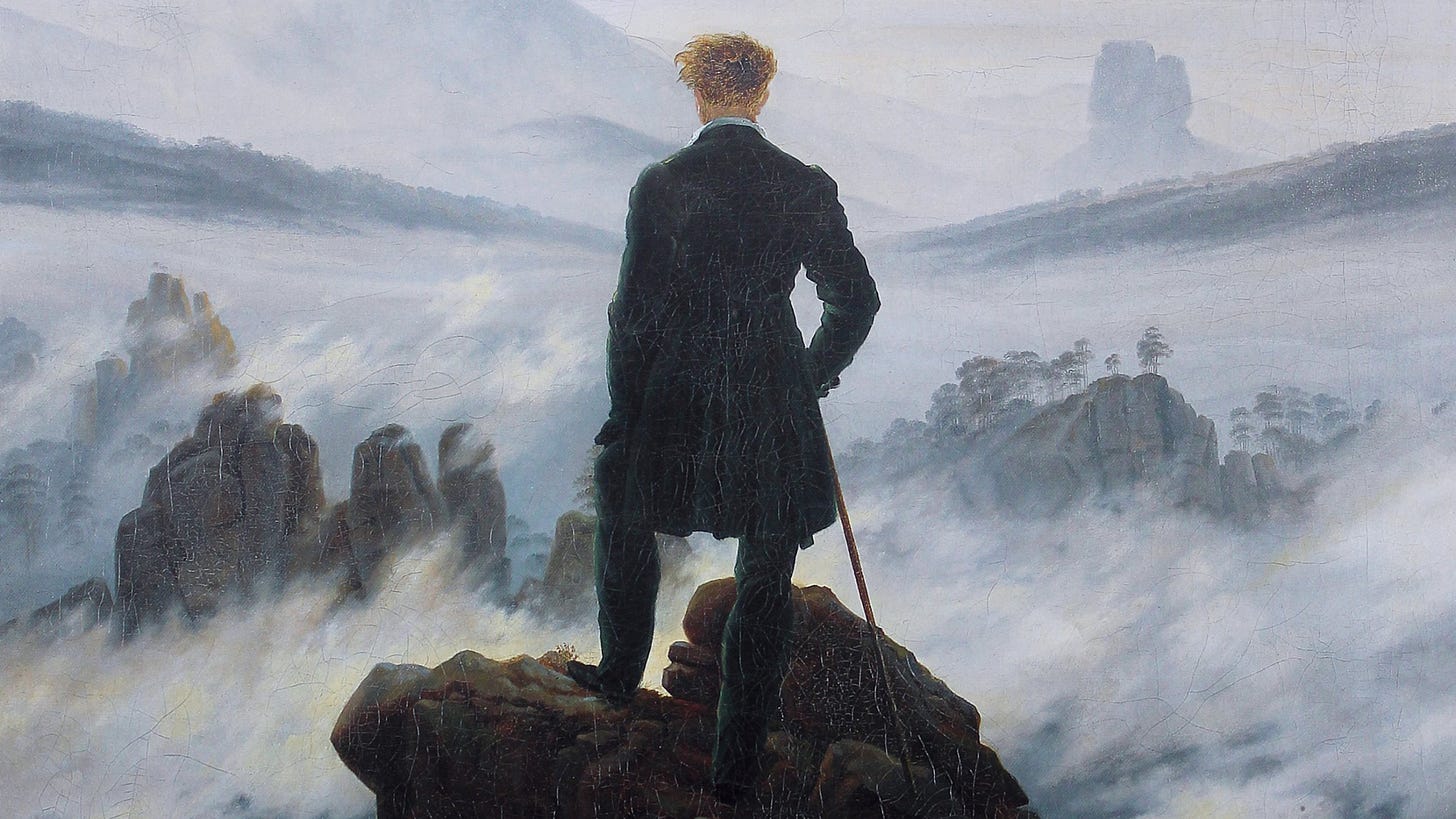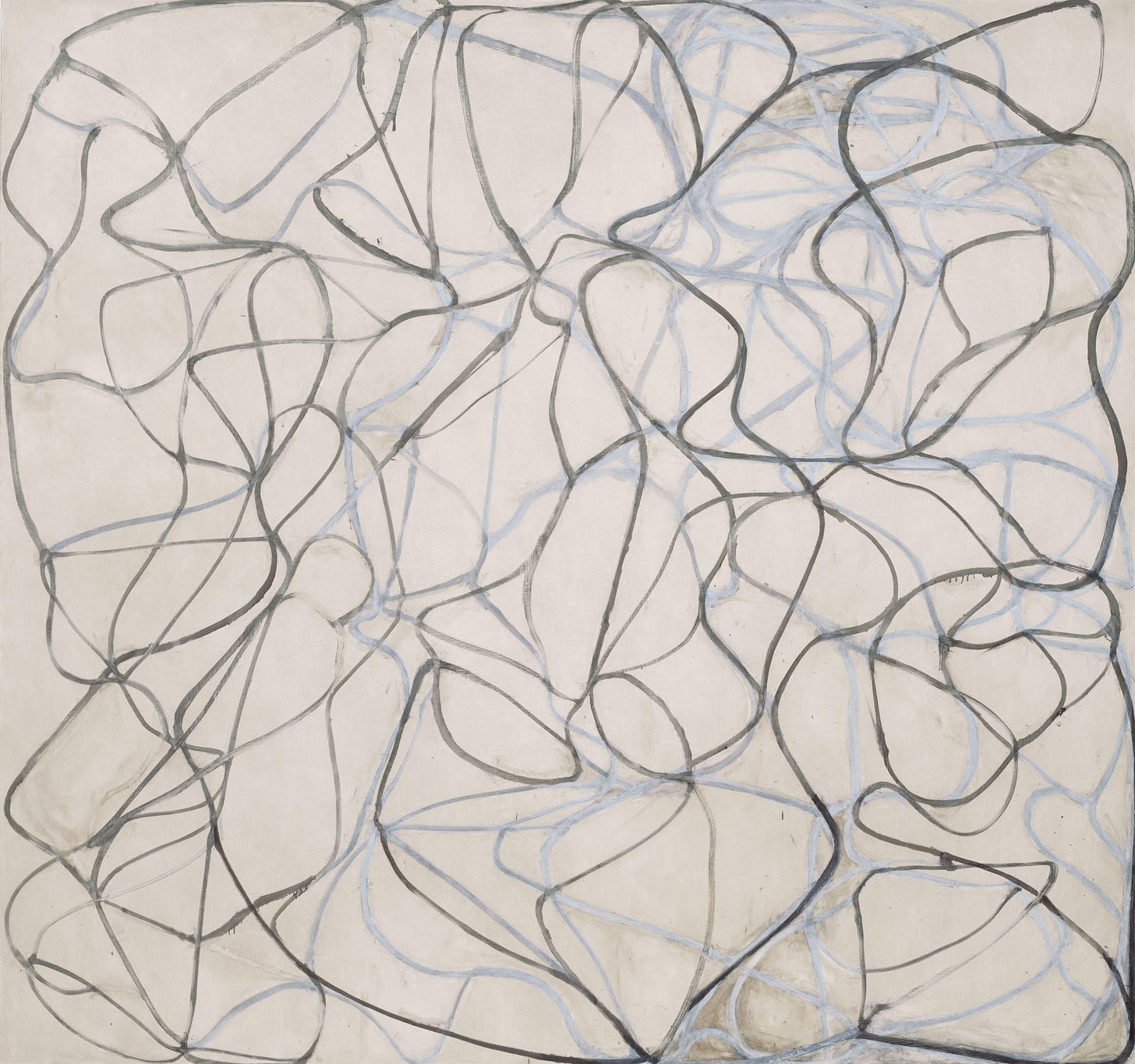Things I Learned: A May-June Miscellany
Or: How floaters in my eye led me down a quantum rabbit-hole
There’s something delightful in how random learning spirals outward. How thinking about tides brings you face-to-face with gravitational waves; how staring at an ostrich egg can rewrite your definition of life. Over the past two months, I’ve been gathering these fragments of sudden clarity—each a tiny shift in perspective, reshaping how I understand the world.
The Eye That Sees Itself
It began, as many things do, with Magritte. I found myself absorbed by The False Mirror (1929) during a late-night rabbit-hole. An iris filled with floating clouds, pupil black as void. Magritte called it “a mind’s eye,” and it clicked—we always look through ourselves to see the world.
Naturally, that led me straight into those tiny luminous dots dancing across a bright blue sky. I’d always assumed they were dust motes or tricks of light. Turns out, they’re my own white blood cells racing through retinal capillaries—my body quietly doing maintenance while I watch. A biological self-portrait drawn in sunlight.
And the floaters, those drifting shadows that occasionally cross my vision like lazy ghosts? Actual collagen fibers in the gel of my eye, casting tiny eclipses on my retina. I’m literally watching the architecture of my own perception slowly degrade in real-time. There’s poetry in that—and a practical reminder: if they suddenly multiply, get them checked.
The Geometry of Detection
Speaking of invisible worlds: LIGO’s arms stretch precisely 90 degrees apart, for the same reason carpenters trust a square—perpendicularity reveals distortion. When gravitational waves ripple through spacetime, one dimension stretches, the other squeezes. The universe’s most violent events—black holes colliding billions of years ago—reduced to tiny interference patterns of laser beams.
That geometric precision mirrors nature’s own choreography. Tides, for example: I’d pictured them as moving waves, but they’re actually two static ocean bulges we rotate through. One toward the Moon, pulled by gravity; the other opposite, formed by inertia as Earth and Moon dance around their barycenter. We’re on a planet locked in a slow celestial waltz, oceans keeping gentle rhythm.
Scale and the Illusion of Complexity
Imagine an ostrich egg on my desk (there isn’t—but let’s pretend). It’s a single cell, all 1.5 kilograms of it. One immense membrane encapsulating biological potential. Remarkably, it’s mechanically identical to a tiny sparrow egg—evolution repeating simplicity at scale.
This idea haunts me: complexity often masks repeated simplicity. Those apples at the supermarket? Still alive, their cells quietly respiring, even repairing DNA damage on the shelf. Life doesn’t stop at harvest—it simply waits.
Mapping the Chemistry of Consciousness
I’ve been exploring where thoughts begin—not philosophically, but biologically. Dopamine erupts from the substantia nigra like a tiny volcano. Serotonin spreads from raphe nuclei like dawn breaking. Norepinephrine floods from the locus coeruleus (“blue spot”) when alertness spikes.
We’re not aimlessly floating in brain chemistry. Each neurotransmitter emerges from evolutionarily refined launching pads, precisely orchestrated.
Common neurotransmitters and their regions of action in the brain (please pardon the spelling mistake; this is a gpt drawing)
But here’s the truly strange part: we might subtly sense Earth’s magnetic fields. Our alpha brainwaves dip slightly when exposed to magnetic fields matching Earth’s strength—an unconscious compass. Perhaps cryptochrome proteins in our eyes are doing quantum biology, collapsing quantum states into directional clues. We’re more quantum than we realize.
Oceanic Cultural Evolution
Songs of the East Australian Humpback Whales
Humpback whales share songs across the Pacific like humans once traded mixtapes. A melody originating near Hawaii eventually reaches Australian waters, evolving and remixing along the way. They’re engaged in a global-scale game of musical telephone—but with clear artistic intention.
And their bubble-net feeding method? Mind-bending. Imagine coordinating with friends underwater, blowing spiraling bubble curtains to herd fish into a cylindrical trap—all performed while holding your breath. It’s equal parts engineering, performance art, and dinner prep. They’ve turned physics into culture.
The Psychological Kilometer
On May 6, 1954, Roger Bannister, a full-time medical student, ran a mile in 3:59.4. The “impossible” four-minute barrier shattered. Just 46 days later, John Landy broke it again. Within three years, 16 more joined them.
The barrier wasn’t physical—it was psychological. Once Bannister proved possibility, inevitability followed. I carry this lesson into my own struggles: How many limitations are simply forgotten agreements we’ve unknowingly accepted?
Light’s Democracy
On cloudy days, shadows vanish. Clouds scatter sunlight evenly, diffusing brightness into a soft, democratic glow. No harsh contrasts, just gentle illumination distributed equally.
The best illumination isn’t always direct brilliance—it often emerges from patient diffusion. Clouds don’t diminish sunlight; they democratize it.
Each fragment of knowledge is a thread. Pull on one, and you find connections everywhere—consciousness entwined with quantum mechanics, whale songs echoing human psychology, gravitational geometry mirrored in diffused sunlight. We’re pattern-seekers in a universe woven from endless patterns. The real wonder isn’t simply learning; it’s realizing there’s always more to uncover.
What thread will you pull today?



